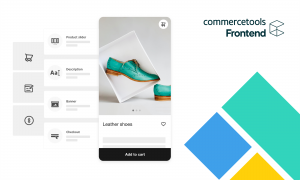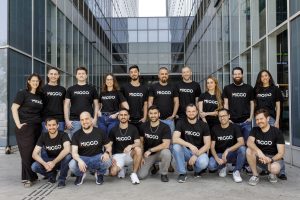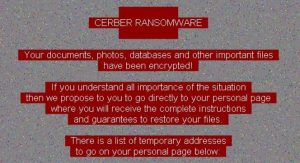3D Printing Round Up: From Amazon.com to NASA space exploration
![]() As 3D printing continues to find wider adoption, it is quickly entering research, food processing, toy manufacture, aerospace, defense, discrete and industrial production.
As 3D printing continues to find wider adoption, it is quickly entering research, food processing, toy manufacture, aerospace, defense, discrete and industrial production.
Over the last few weeks small and large firms are adopting 3D in some way by experimenting to determine how they might apply it, or using it to prototype products or producing final products.
Amazon has entered the 3D printing space by opening a new marketplace for consumers, whereas NASA is busy exploring 3D technology for space exploration.
Amazon opens 3D Printing store
Not to fall behind eBay, Amazon opened a new service that delivers over 200 customized, 3D on-demand print products. The first products range from personalized tags for dogs, cases for credit cards, iPhone sleeves, and custom bobble heads.
Amazon will not be involved in the production process, but simply connect customers with consolidated companies in the field of 3D printing such as Sculpteo, Mixy Labs, and 3DLT, who will be responsible for the fulfillment of orders placed through the new store.
According to Amazon, the new store will feature fun and easy-to-use design templates for customers to put their individual style on an item they create and 3D preview capability to enhance the customer experience. With the 3D product preview function, customers will be able to 360 degree rotate a virtual model of a product to tailor the item from every angle. After an item is personalized and the customer has finished the checkout process, the item is 3D printed on-demand by a manufacturing provider and shipped directly to the customer.
3D-printing for space exploration
The current crop of 3D printing technology can generally only work with one material or it is difficult for that material to be swapped out during the process. This prevents the use of many 3D printing processes for the construction of space technology.
To fill this industry vacancy, the Jet Propulsion Laboratory of NASA along with the California Institute of Technology and Pennsylvania State University have overcome the problem by building a 3D printer process that can transition from one metal or alloy to another during a single print job.
The new process allows a 3D printer to switch between different types of alloys thus tweaking its properties–including melting temperature and density–separately at different ends of the object.
“You can have a continuous transition from alloy to alloy to alloy, and you can study a wide range of potential alloys,” said R. Peter Dillon, a technologist at JPL. Dillon believes this will radically change the future of 3D printing given the opportunity to rapidly produce and test prototypes with highly customizable properties.
The team believes the possibilities are endless–from machinery and industry here on Earth to complex space exploration tools on Mars.
Meanwhile, the American company SpaceX, which is developing Falcon rockets, has set a new milestone in the development of technology. The company used a simple 3D-printed element in their rocket launched back in January. The mission marked the first time SpaceX had ever flown a 3D-printed part: a valve that operated successfully with high pressure liquid oxygen, under cryogenic temperatures and high vibration.
MIT is creating smart 3D printer
Failed 3D printing, wasted filament, or poorly printed 3D objects–the list goes on for what can go wrong during a 3D print. Anyone who has worked with a 3D printer knows the frustration of a bad print. But now, MIT students Claudio V. Di Leo, Louise E. van den Heuvel, and Sumant S. Raykar may have the solution to these 3D printing woes.
The students have developed a supplementary device for 3D printers, with which is possible to recognize incorrectly created objects at an early stage. The system then scans the object in situ and compares that scan to the original digital design–when deviations are detected that would lead to a failed end product, the operator can be warned or print job halted before the flaws become catastrophic–or, if it is possible, print the missing portion.
With each layer of material printed, a webcam and a laser guide scan the remaining object and software keeps a running model of the current status of the print job. Should the printer malfunction, come to halt, or run out of material, the print job can continue without having to scrap the entire print.
The MIT students plan to make it open source and thus opening the research environment to improve the quality of 3D printers in the long term.
3D printing food for US Army
3D printing can be used for everything from food to clothing to weapons, and the US Army has taken notice. The most recent issue of the Army Technology magazine says the military branch is currently researching 3D printing in weapons like guns and warheads; medical equipment; clothing, armor and gear; parts to build or repair tools; parts to build or repair tools and most importantly food for soldiers.
Food scientists at the US Army Natick Solider Research, Development and Engineering Centre are investigating the 3D applications of food processing and product development. The team is currently trying to use a method called ultrasonic agglomeration to 3-D print small snack-type items. Once the team masters this, it might move on to more challenging items such as pizza and pasta.
Image: 3D Printed Burr Puzzle on Amazon.com made by CarryTheWhat
A message from John Furrier, co-founder of SiliconANGLE:
Your vote of support is important to us and it helps us keep the content FREE.
One click below supports our mission to provide free, deep, and relevant content.
Join our community on YouTube
Join the community that includes more than 15,000 #CubeAlumni experts, including Amazon.com CEO Andy Jassy, Dell Technologies founder and CEO Michael Dell, Intel CEO Pat Gelsinger, and many more luminaries and experts.
THANK YOU













